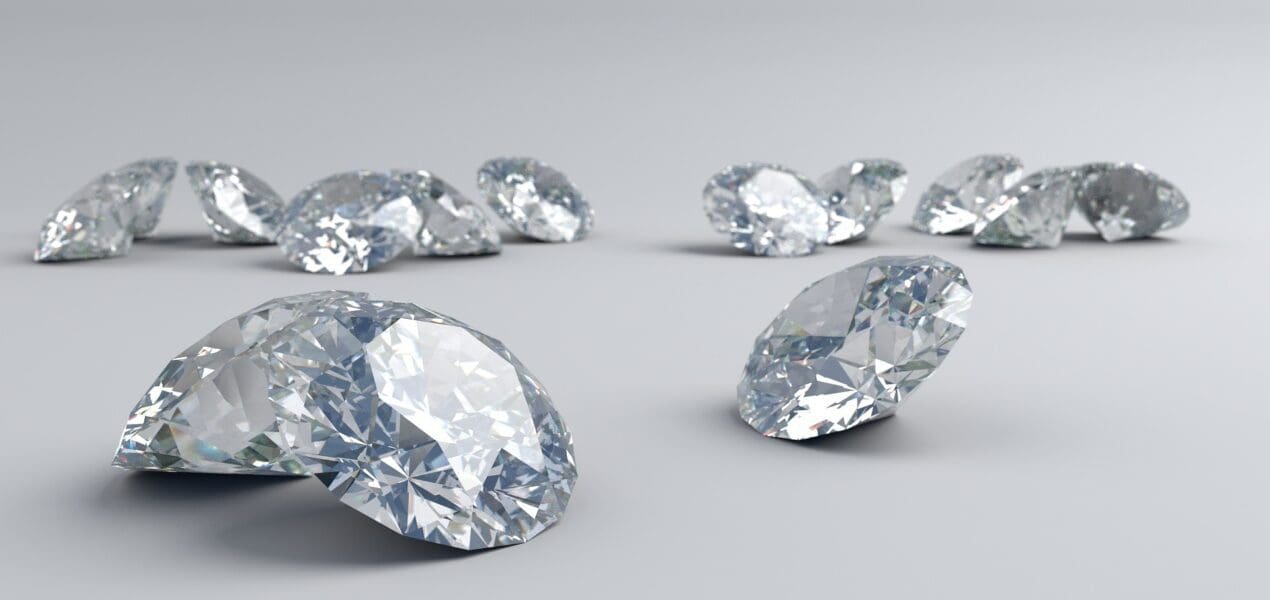Updated On: April 07, 2024 by dina
The world is home to many extraordinary and expensive materials, some of which have an incredibly high price tag. These materials, coveted for their rarity, unique properties, and specialised applications, have captivated the imagination of scientists, collectors, and enthusiasts’ imaginations. From the ethereal antimatter to the shining diamonds, let us discover the ten most expensive materials on Earth, exploring their origins, uses, and factors contributing to their remarkable value.
As we embark on a journey to explore the top ten most expensive materials on Earth, we delve into the origins, uses, and awe-inspiring qualities that have shaped their value. Each material represents a tapestry woven with scientific achievement, economic forces, and humans’ inherent fascination for the rare and exceptional.
What Are the Most 10 Expensive Materials on Earth?
As of my knowledge cutoff in September 2021, the following are some of the most expensive materials on Earth. Prices can fluctuate over time, and new materials that could be more expensive may emerge.
1. Antimatter
Antimatter is a matter composed of antiparticles with the same mass as ordinary particles but with opposite charges. When antimatter comes into contact with matter, they annihilate each other, releasing tremendous energy. Antimatter is incredibly rare and challenging to produce and store. It requires highly advanced technology and facilities. The estimated cost of producing antimatter is around $62.5 trillion per gram, making it the most expensive material on Earth.
Antimatter has primarily been studied for scientific research, particularly in high-energy physics. It has potential applications in areas such as medical imaging (PET scans), cancer treatment (particle therapy), and propulsion systems for space exploration (antimatter rockets). However, harnessing and utilising antimatter is still experimental due to the significant technical and cost challenges.
2. Californium
Californium is a synthetic element with the atomic number 98. It is highly radioactive and has various scientific and industrial applications. Californium-252, the most stable isotope of californium, is used in neutron radiography, nuclear reactors, and as a neutron source for medical purposes. It is also used in research laboratories to study the properties of materials. Due to its rarity and complex production process, californium is priced at approximately $25-27 million per gram.
Californium-252, the most stable isotope of californium, is used in various industrial and scientific applications. It is a powerful neutron source utilised in neutron radiography for non-destructive testing of materials and neutron activation analysis for identifying trace elements in samples. Californium also finds applications in nuclear reactors, oil well logging, and medical research.
3. Taaffeite
Taaffeite is a rare and precious gemstone that belongs to the Beryl family. It was first discovered in Sri Lanka in 1945. Taaffeite is prized for its beauty, colour, and scarcity. It exhibits a range of colours, including lavender, pink, mauve, and violet. The value of taaffeite depends on factors such as colour, clarity, carat weight, and cut. High-quality taaffeite can command prices of up to $20,000 per carat.
Taaffeite is primarily used as a gemstone in jewellery. Its attractive colours, such as lavender, pink, and violet, make it a sought-after and valuable stone for collectors and jewellery enthusiasts. Taaffeite is often faceted into gemstones and used in rings and other types of jewellery.
4. Tritium
Tritium is a radioactive isotope of hydrogen with two extra neutrons. It is commonly used in self-luminous exit signs, watch dials, and other applications requiring a stable, low-energy radioactive source. Tritium undergoes radioactive decay, emitting low-energy beta particles. Tritium costs around $30,000 to $36,000 per gram due to its limited availability and complex production process.
Tritium, a radioactive isotope of hydrogen, is primarily used in self-luminous devices. It is employed in exit signs, watch dials, and compasses to provide continuous illumination without needing an external power source. Tritium’s radioactive decay produces low-energy beta particles that excite phosphors, producing a glowing effect.
5. Plutonium
Plutonium is a radioactive, silvery metal with atomic number 94. It is primarily known for its use in nuclear reactors and nuclear weapons. Plutonium-239 is a fissile isotope that can sustain a nuclear chain reaction. Plutonium is produced by irradiating uranium-238 in nuclear reactors, and the process is complex and expensive. The price of plutonium can vary, but it is estimated to be around $4,000 per gram. Plutonium has two main applications. First, it is used as fuel in nuclear reactors for electricity generation and in some research reactors. Second, plutonium has been used to produce nuclear weapons due to its fissionable properties. However, plutonium proliferation for weapons purposes is heavily regulated under international agreements.
6. Gold
Gold is a precious metal highly valued for centuries due to its beauty and rarity. It is known for its attractive yellow colour, resistance to corrosion, and malleability. Gold is widely used in jewellery, investment products, electronics, and various industrial applications. Gold prices fluctuate based on global demand, supply, economic conditions, and investor sentiment. It has reached highs of around $2,000 per ounce.
Gold has been valued for its beauty and rarity for thousands of years. It has various applications, including jewellery, investment products (such as gold bars and coins), electronics (due to its excellent conductivity and corrosion resistance), dentistry, and some industrial processes, like plating or coating for decorative or functional purposes.
7. Rhodium
Rhodium is a rare, silvery-white metal belonging to the platinum group of elements. It is highly resistant to corrosion and is known for its reflective properties. Rhodium is primarily used in catalytic converters to reduce harmful emissions in vehicles. It is also used in various industrial applications, such as glass production and electrical contacts. Rhodium prices have experienced significant fluctuations in recent years, reaching over $20,000 per ounce.
Rhodium is primarily used in catalytic converters to reduce harmful emissions in vehicles. It helps convert toxic gases, such as nitrogen oxides (NOx), carbon monoxide (CO), and hydrocarbons (HC), into less harmful substances. Rhodium is also used to produce glass and electrical contacts and as a catalyst in specific industrial chemical reactions.
8. Painite
Painite is an extremely rare borate mineral discovered in Myanmar in the 1950s. It is known for its striking brownish-red or reddish-brown colour and hexagonal crystal structure. Painite has been dubbed one of the rarest gemstones in the world due to its scarcity. Until recently, painite was considered one of the rarest minerals. The gemstone has gained significant attention and value in the market due to its rarity.
Painite’s high value is determined by several factors, including its colour, clarity, carat weight, and overall quality. The gemstone’s rich colours and distinct hexagonal crystal structure enhance its visual appeal. Painite can exhibit shades of brown, reddish-brown, and sometimes pink, making each stone unique. Given its extreme scarcity, the prices of painite can be exceptionally high. The value is typically measured per carat, with top-quality painite fetching prices of up to $60,000 in rare instances. However, it is worth noting that the market for painite can be relatively small and specialised.
Painite is primarily used as a gemstone in high-end jewellery. Due to its scarcity and unique colouration, it is highly demanded by collectors and enthusiasts. Painite gemstones are cut and faceted for use in rings, pendants, earrings, and other forms of high-quality jewellery.
9. Platinum
Platinum is a lustrous, silver-white metal considered a part of the platinum group of elements. Platinum is famous for its high density, corrosion resistance, and excellent catalytic properties. Platinum is widely used in jewellery, catalytic converters, electrical contacts, and various industrial applications.
Supply and demand dynamics, economic conditions, and investor sentiment may influence platinum prices. Platinum is higher than gold prices due to its scarcity and diverse industrial applications. In recent years, platinum prices have ranged around $1,000 per ounce, but they can experience fluctuations.
Platinum has diverse applications. It is widely used in jewellery, especially engagement rings and wedding bands. Platinum’s excellent corrosion resistance and catalytic properties make it valuable in automobile catalytic converters, chemical processes, fuel cells, and electrical contacts. It is also used in medical devices like pacemakers and dental equipment.
10. Diamonds
Diamonds are among the world’s most well-known and coveted gemstones. They are made within the Earth’s mantle under high pressure and temperature. Diamonds are prized for their exceptional brilliance, hardness, and rarity.
The value of a diamond is determined by the “Four Cs”: carat weight, colour, clarity, and cut. Large, flawless diamonds with exceptional colour are particularly valuable. Factors such as fluorescence, shape, and overall craftsmanship influence a diamond’s price.
Diamond prices vary significantly, ranging from a few hundred dollars for smaller, lower-quality stones to millions or even tens of millions for exceptional, high-quality diamonds. Notable diamonds with historical significance, unique colours (such as pink or blue), and large-carat weights tend to be the highest prices in the market.
Diamonds are primarily used in jewellery, engagement rings, and luxury accessories. They are cut and polished into various shapes and sizes to enhance their brilliance and beauty. Industrial-grade diamonds, known as industrial diamonds or bort, are used in cutting, grinding, and polishing tools due to their exceptional hardness. They are also used for scientific research in high-pressure and high-temperature applications, such as diamond anvil cells.
Why Are These Materials Expensive?
These materials are expensive and not affordable for various reasons, including:
- Rarity: Many materials are extremely rare and difficult to find. Their scarcity drives up their prices due to limited supply and high demand. For example, painite, taaffeite, and californium are all exceptionally rare, making them highly sought after by collectors and researchers.
- Complex Production Processes: Some materials, such as antimatter and tritium, require complex and costly production processes. Antimatter production involves particle accelerators and advanced scientific techniques, while tritium is typically generated through nuclear reactors. These processes require significant technology, infrastructure, and expertise investment, contributing to their high cost.
- Specialised Applications: Many materials have specialised applications in nuclear energy, research, and high-tech industries. The demand for these materials is often driven by their unique properties and necessity for specific applications. For instance, platinum and rhodium are essential for catalytic converters used in automotive emissions control, and their scarcity increases their value.
- Value Perception: Certain materials, like gold and diamonds, have been culturally valued for centuries due to their beauty, rarity, and historical significance. Gold has long been considered a store of value and a symbol of wealth, while diamonds have been associated with luxury and romance. These societal perceptions and cultural significance contribute to their high prices.
- Market Dynamics: Market forces such as supply and demand, economic conditions, and investor sentiment also influence the prices of these materials. Factors such as geopolitical events, economic instability, and fluctuations in currency values can affect the demand for and availability of these materials, leading to price fluctuations.
The prices of these materials can change over time due to technological advancements, the discovery of new sources, shifts in demand, and market dynamics.
Can People Afford These Expensive Materials?
The affordability of these materials varies significantly depending on the material in question and an individual’s financial circumstances. Some materials, such as gold and diamonds, have various price points, making them accessible to a broader market. While high-quality and large diamonds can be extremely expensive and out of reach for most people, smaller and lower-quality diamonds can be more affordable and within reach for many consumers.
On the other hand, materials like californium, antimatter, and painite are exceptionally rare and expensive. Their prices are often in the millions or even billions of dollars per gram, making them highly inaccessible for most individuals. These materials are typically acquired and used in specialised scientific research, industrial applications, or held in rare mineral collections.
The value and affordability of these materials can also be subjective and influenced by personal preferences and financial situations. What may be considered affordable or valuable to one person might be different for another. Plus, the availability and prices of these materials can change over time due to technological advancements, discoveries, or shifts in supply and demand. Certain materials may become more accessible or affordable as new sources are found, or production methods become more efficient.
Ultimately, the realm of expensive materials unveils a fascinating tapestry of rarity, scientific advancement, cultural significance, and industrial applications. Whether the elusive antimatter, the mesmerising taaffeite, or the enduring allure of gold and diamonds, each material offers a glimpse into the intricate relationship between value, demand, and scarcity. While these materials may be beyond the reach of many, they continue to shape our world through their scientific contributions, aesthetic appeal, and technological advancements. As we navigate the ever-evolving landscape of materials, their significance reminds us of our planet’s remarkable diversity and wonder.











